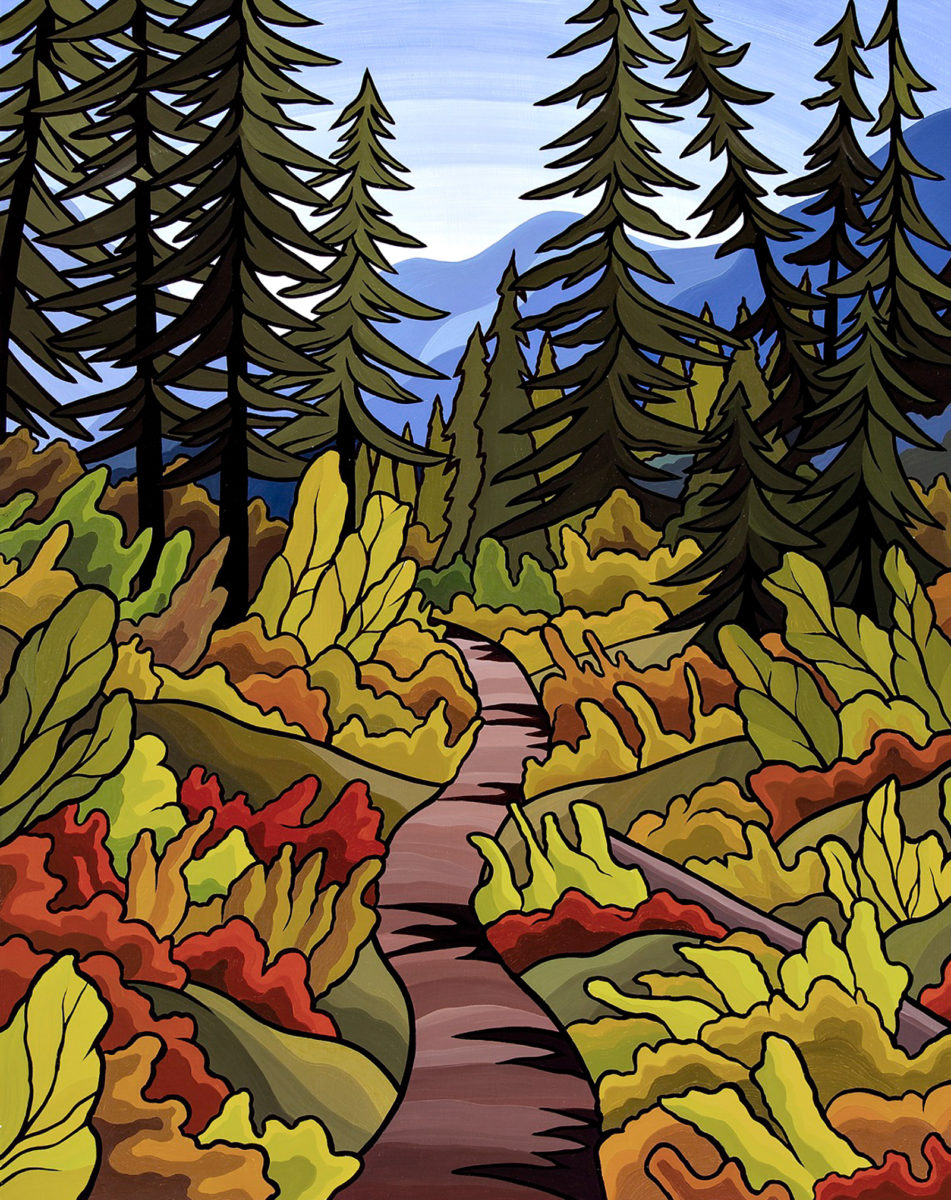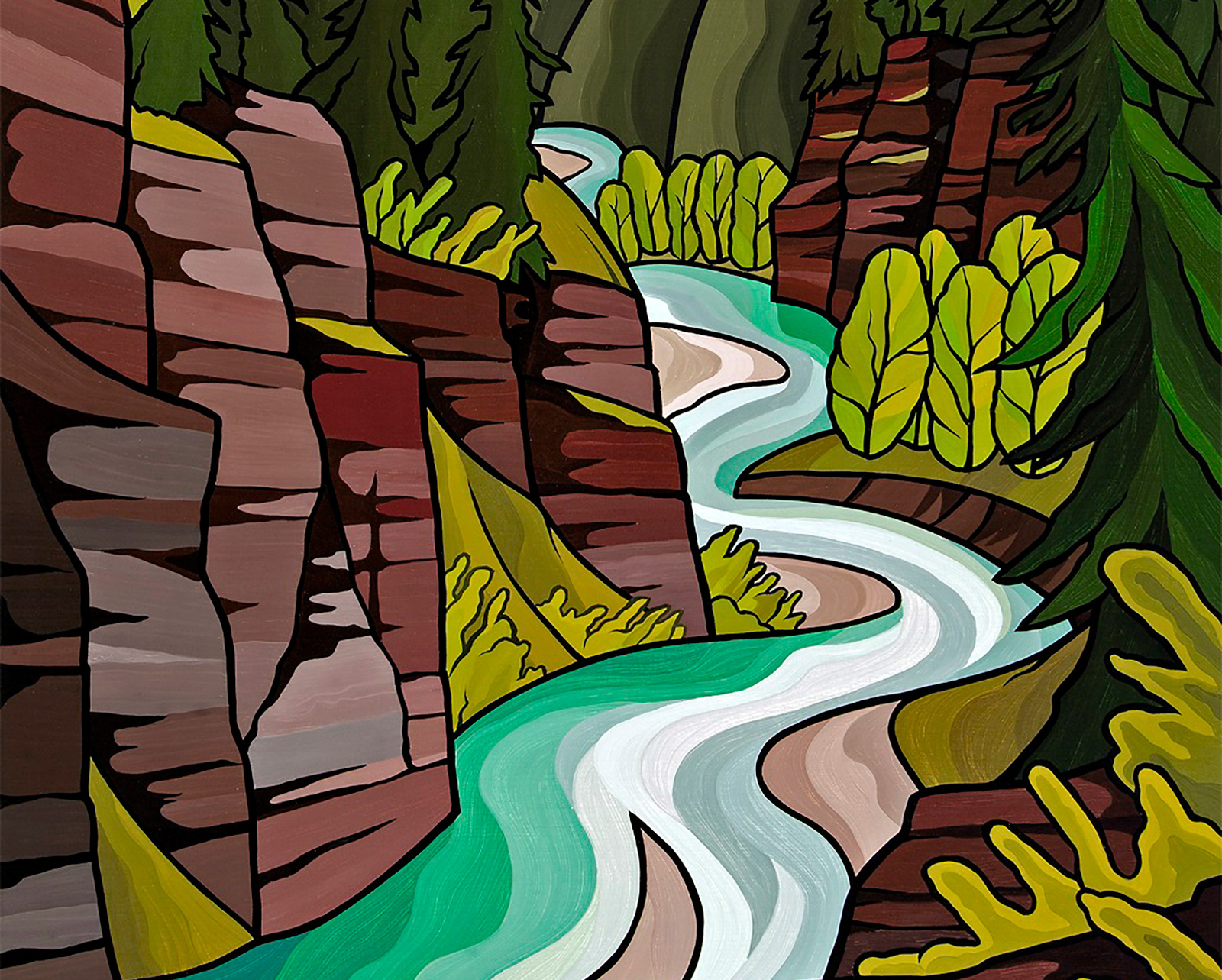A new exhibition featuring the work of Bozeman-based artist James Weikert opened at the Hockaday Museum of Art last week. The community gallery exhibition, titled “Story of a Place: Two Weeks in the Great Bear Wilderness,” features a collection of paintings Weikert created based on his experience with the Artist Wilderness Connection (AWC) residency.
The AWC is a collaborative artist-in-residence program managed by Hockaday, the Flathead National Forest, the Bob Marshall Wilderness Foundation and Swan Valley Connections. For 18 years, the residency program has selected working artists from various disciplines and mediums to spend up to two weeks living off the grid in western Montana’s largest wilderness areas.
“What interested me about the AWC residency is that you’re alone in the wilderness with no one around to bug you for weeks,” Weikert said. “What really spoke to me about the opportunity was the long period of time where I would be able to focus on all the things I don’t get to at home.”
Weikert works as an architect in Bozeman, fitting in studio time in the evenings and on weekends to work on his oil paintings. The chance to take two weeks in September of 2021 to think about nothing but art and nature seemed like a “slam dunk.”
Artists in the AWC residency program are mule packed to an isolated cabin, in Weikert’s case deep in the Great Bear Wilderness on the northern edge of the Bob Marshall Wilderness Complex. The cabin provided the bare-minimum comforts, namely a roof, bed and stove. Water had to be collected every day and filtered before Weikert could make his morning coffee.
“Every mundane task took on more meaning, simplifying every aspect of life,” he said. “Instead of checking my goddamn Instagram every 20 minutes, I would be looking forward to the alpenglow on a peak every night, and planning what to read next.”
Rather than pack in his oils and canvases to paint on site, Weikert opted to just bring a sketchbook and his watercolors. Each day he would head out for a hike and take numerous photos of sights that moved him — deep purple cliffs, bright green mosses, the emerging reds and yellows of his surroundings transitioning to autumn.
“A lot of my artwork is panoramic: grand views on a peak looking over miles of terrain or on the plains looking up at a mountain range,” Weikert said. “In this experience, I wanted to look at the details of the forest — what trees are here, how can I fit them into my style, how does the understory look like, how is the light playing between the trees.”
In the evenings, Weikert would go through his day’s photos, begin sketching what he’d seen and detail notes about his experience. By the end of the two weeks, he accumulated more than 50 pages of journal entries, sketches and notes.

Upon returning to civilization, Weikert said it took several weeks to adjust to normal life and process his experience. He didn’t begin working in the studio until late November of last year, when the work started flowing out of him.
The series of paintings in the gallery show sum up Weiker’s thoughts on being alone in the wilderness as well as the detailed focus he gave to his surroundings.
The first piece he finished, titled “Earth River,” is an abstracted view of the Middle Fork of the Flathead River that contrasts the turquoise waters with deep-maroon argillite cliffs and dark-green forest canopies. It’s a piece Weikert says best captures the entirety of the place he lived in. Two other paintings, “Forest Glow” and “Late Summer Prismatic,” were sketched from a hike done on the same day, but with vastly different light filtering through the smoky sky, which Weikert used to highlight the details of the forest’s undergrowth.
“Of all the residency programs out there, this one is so unique by placing you in the wilderness to live,” Weikert said. “Everyone, not just artists, should have the opportunity to be immersed in nature like that.”
“It was great to just sit down and have nothing else to do but read and think and sketch for hours and hours a day,” he added. “It felt like it was my master class in art.”
This last summer, two artists were selected for the AWC residency — creative writer Max Owens and visual artist Beth Vallieres. Both will have a public display of their work in the future.
“Story of a Place” will be on display until Dec. 23. Admission to the gallery is $5 per person, with discounts for seniors and students. Winter gallery hours are Tuesday, 11 a.m. – 5 p.m., Wednesday thru Saturday, 11 a.m. – 4 p.m.
